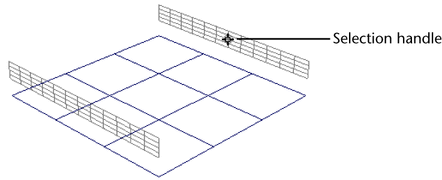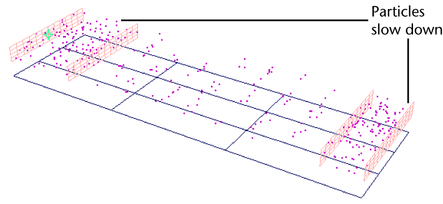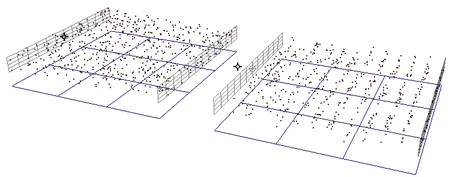 .
.
For controls related to creation, see Set surface flow creation controls.
For controls that you can edit later, see Editing a surface flow .
Set surface flow creation controls
The creation controls apply only at the time of creation. You cannot modify these controls later.
You can edit these attributes after you create the Surface Flow effect by selecting the surface flow selection handle and opening the Channel Box or the Attribute Editor, Extra Attributes section.

You cannot directly rotate or translate manipulators, because they automatically adjust to any changes in the shape of the surface. However, you can edit the Location attributes to move them along the surface.
By default, the manipulators are displayed as smooth bands that wrap around the base surface in exactly the shape that you specify. The actual shape that the effect uses depends on the Manipulator Resolution value that you set at the time you created the surface flow.
To see that shape, turn on the Show True Manip Shape attribute. This does not affect the way that the surface flow moves the particles. It simply lets you see how accurate the simulation is trying to be.
Controls the position of each flow manipulator, measured in U or V. You can move manipulators anywhere along the surface in any order.
Typically, you adjust the manipulator locations to affect the particle speed. Particles slow down between manipulators that are close and speed up between manipulators that are distant.

You may also need to adjust the location of a manipulator if it is placed at the end of converging threads. For example, a manipulator at the end of a cone would be invisible because the surface at that point is zero.
These values are always between 0 and 1, regardless of the parameterization of the original surface. Therefore, a value of 0.5 will be approximately in the center of the surface.
Controls the beginning and end positions of each flow manipulator, measured in U or V. Adjust these values if you want the flow to cover only part of the surface. For example, you can break up a surface into two adjacent flows by ending one flow (Max setting) at the same point where the second flow begins (Min setting).
These values are always between 0 and 1, regardless of the parameterization of the original surface. Therefore, a value of 0.5 will be approximately in the center of the surface.
Specifies what part of the total particle lifespan occurs in the flow—a ratio of flow lifespan to total lifespan. For example, if you set the Max Age Ratio to 0.5, the particles flow along the surface for half their lifespan and then continue beyond the last flow manipulator.

The age ratio also indirectly affects particle speed. In the above example, the particles only have half their lifespan to reach the end of the flow, so they speed up.
Connect flows on separate surfaces
You can connect flows from separate surfaces so they share the same particles. The workflow is different depending on whether you create flows at the same time or start with an existing flow.
 .
.
The effect creates one flow per surface, with the particles flowing in the order of selection.

There will be one flow per surface, but the particles may not flow correctly. Correct the flow of particles using the following steps.

The following table gives example settings for two flows.
Because surface flows create expressions in the affiliated particle objects, you should not delete flows using the  key or Edit > Delete option. Follow the instructions below.
key or Edit > Delete option. Follow the instructions below.
 .
.
If you accidentally delete a flow with the  key or Edit > Delete option, follow these instructions to clean up the nodes in your scene.
key or Edit > Delete option, follow these instructions to clean up the nodes in your scene.